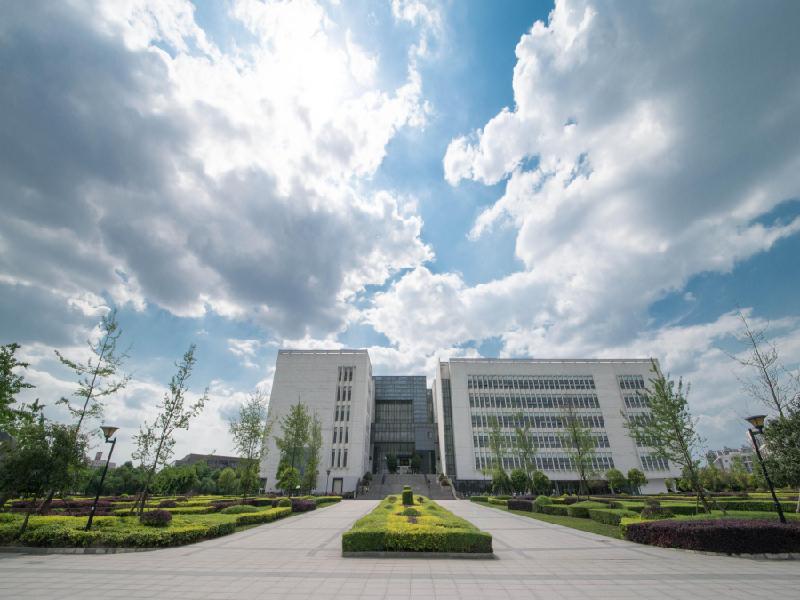Xihua University
Xihua University
Xihua University, located in Chengdu City, Sichuan Province, is a provincial key comprehensive university with complete disciplines and multi-disciplinary development. It has been selected as "Basic Capacity Building Project of Central and Western Universities", "Education and Training Plan for Excellent Engineers 2.0", "Sichuan 2011 Plan" and "Sichuan Excellence". The Engineer Education Training Plan and Sichuan Province's "Double-first-class" Construction Plan are selected by the "Preparatory Class for Children of Border Guards" of the People's Liberation Army of China as a model University jointly built by universities and the Ministry of Education, and Sichuan Province as a model university for deepening innovation and entrepreneurship education reform, which has the ability to recommend excellent undergraduate graduates to the whole country. Students are exempt from examinations for postgraduate studies.
Sichuan Agricultural Machinery College, the predecessor of Xihua University, was founded in 1960 to respond to Chairman Mao Zedong's call that the fundamental way out for agriculture lies in mechanization. At that time, it was one of the undergraduate agricultural machinery colleges established at seven different distribution points in seven major regions of the country. It was renamed Chengdu Agricultural Machinery College in 1972 and Sichuan Province in 1978. The government was listed as a key provincial university and renamed Sichuan Institute of Technology in 1983. In 1990, the Academic Degree Committee of the State Council approved that schools have the right to grant master's degrees. In 2003, Sichuan Institute of Technology and Chengdu Teachers College merged to form Xihua University. In 2008, Sichuan Economic Management Cadre College was integrated as a whole.
As of June 2018, the three campuses of the school, Pengzhou and Rennan Campus, covering an area of nearly 3,000 mu, have 27 colleges and 86 undergraduate majors; 18 first-level disciplines with master's degree authorization, 12 professional master's degree categories and 68 master's degree authorization points; more than 45,000 full-time students and more than 2,000 graduate students.


-
1.The Beijing Palace Museum
The Beijing Palace Museum was established on October 10, 1925, and is located in the Forbidden City of the Beijing Palace Museum. Based on the palaces of Ming and Qing dynasties
Time 2018-11-24 -
2.De ang Watering Festival
The De'ang Water-Sprinkling Festival (also known as the Water-Sprinkling Festival) is held seven days after the Qingming Festival every year. It is a three-day commemorative event that combines the th
Time 2019-04-26 -
3.Jiangnan bamboo
Chinese traditional instrumental music, silk and bamboo, is popular in southern Jiangsu and Zhejiang. After the Revolution of 1911, great progress was made in Shanghai
Time 2019-05-05 -
4.Cork paintings
Cork painting, also known as cork carving, woodcut. Chinese traditional folk sculpture crafts. It is mainly produced in Fuzhou, Fujian Province. It is a handicraft combining carving and painting. Simp
Time 2019-06-11 -
5.Woodbugle
Forest chant is a traditional folk song in Northeast China. It is a kind of song sung by woodcutters who are engaged in carrying wood in the forest. As the saying goes, "trumpet". At present
Time 2019-06-12 -
6.Xiangyuan Drum Book
Xiangyuan Drum Book is a traditional opera in Shanxi Province. Originated in Xiangyuan, Shanxi Province, it is popular in Shangdang area. It is also called Guer Ci and Xiangyuan Tune. According to leg
Time 2019-07-06 -
7.Yibin university
Yibin College is located in Yibin City, Sichuan Province, which is a famous national historical and cultural city. It is a full-time comprehensive undergraduate college with beautiful environment and
Time 2019-08-31 -
8.China Agricultural University
China Agricultural University (China Agricultural University), referred to as "China Agricultural University", is located in Beijing City By Ministry of Education of the People's Republic of
Time 2019-12-21 -
9.Steamed pork with rice flour
Yuan Mei, a Qing Dynasty poet of steamed pork with rice flour, is a Jiangxi dish in Suiyuan food list. It belongs to a variety of cuisines in southern China (such as Sichuan, Chongqing, Hunan, Anhui,
Time 2020-03-22 -
10.Liubeichi Park
Liubeichi park is located at No.4 Minjiang East Road, Yibin City, with an area of 238.18 mu. It is a national AAAA tourist attraction. It is a famous scenic spot and a key Park in Sichuan Province.
Time 2020-10-16 -
11.Historical evolution of Neijiang
Xia and Shang were Liangzhou, Zhou was Yongzhou, spring and autumn and Warring States were ba Jun and Shu Jun; Western Han Dynasty was Zizhou; Eastern Han Dynasty was Han'an county.
Time 2020-12-16 -
12.Guangan waterway
Guang'an port is a "port group" composed of Guang'an port area, Huaying port area, Yuechi port area and wusheng port area distributed in Guang'an section of Qujiang River and Jialing River. Guang'an port is an important support for industrial lay
Time 2020-12-19